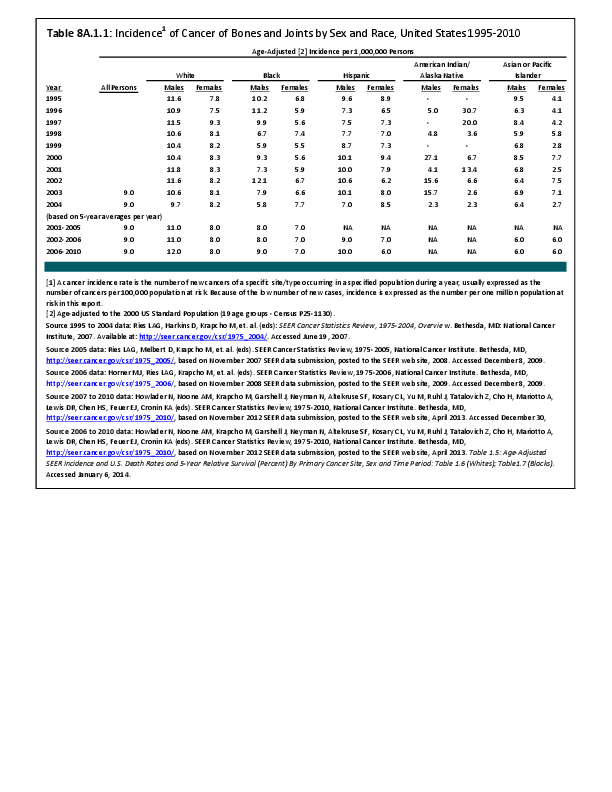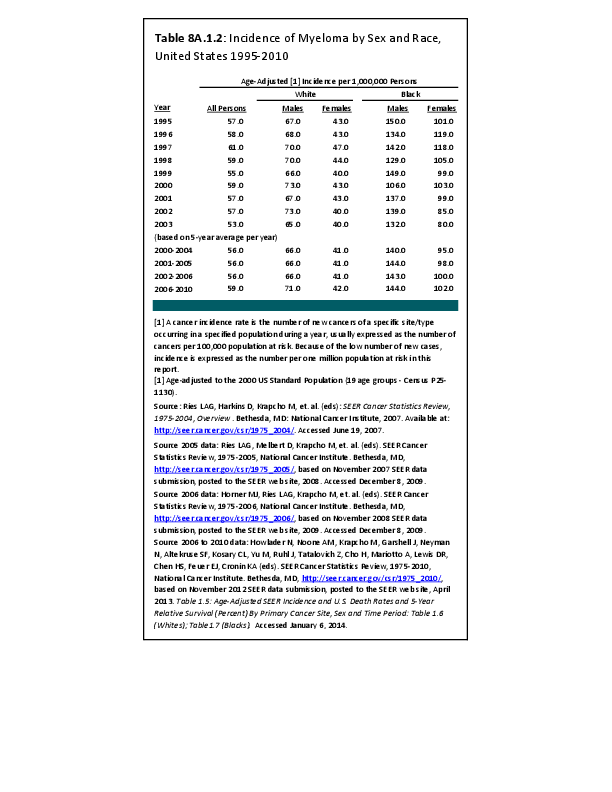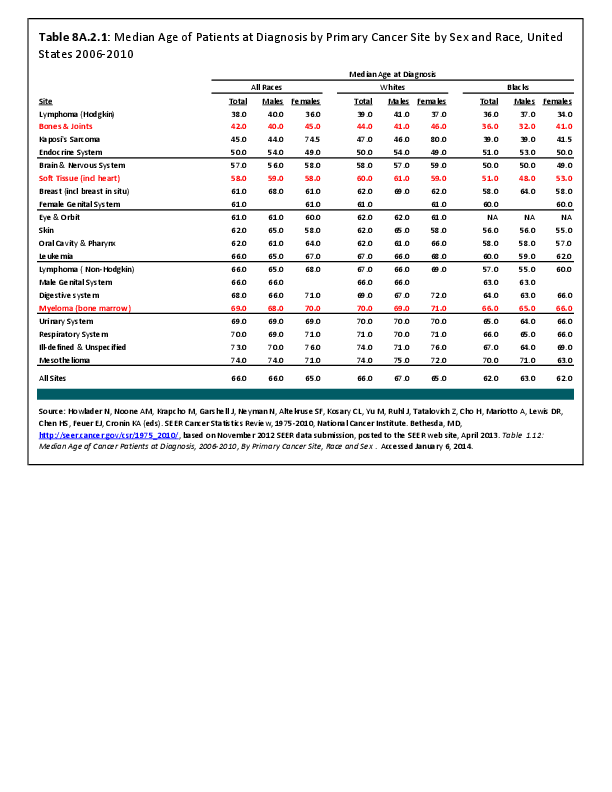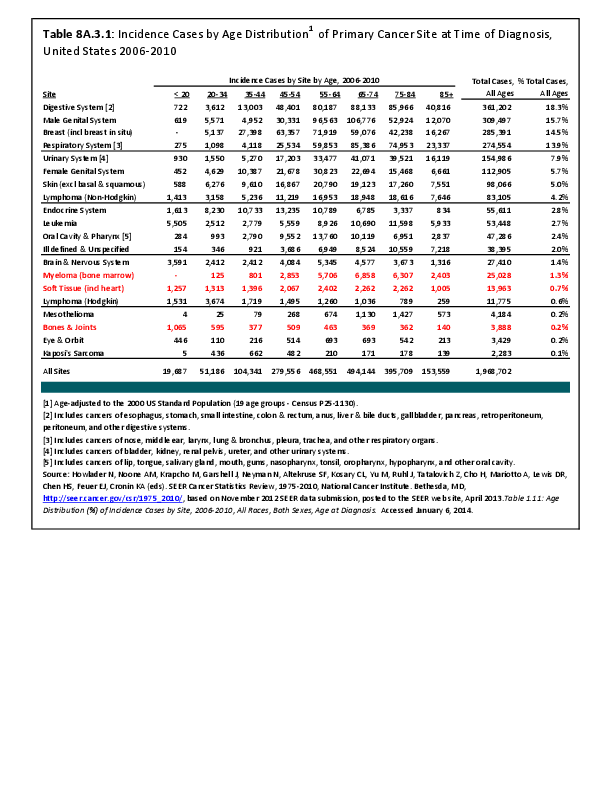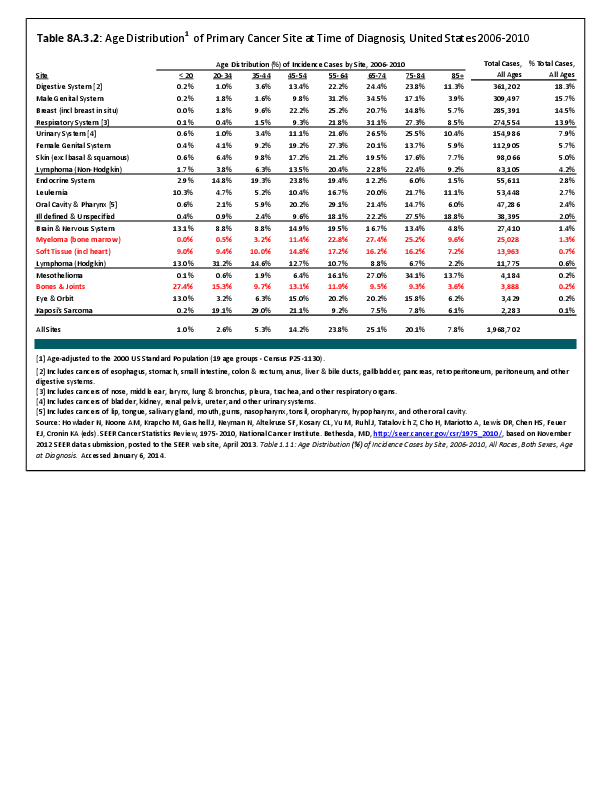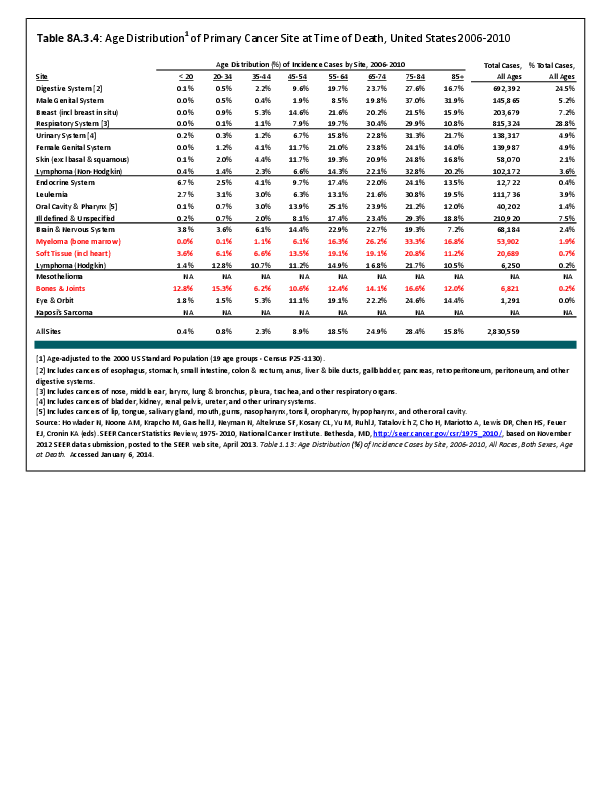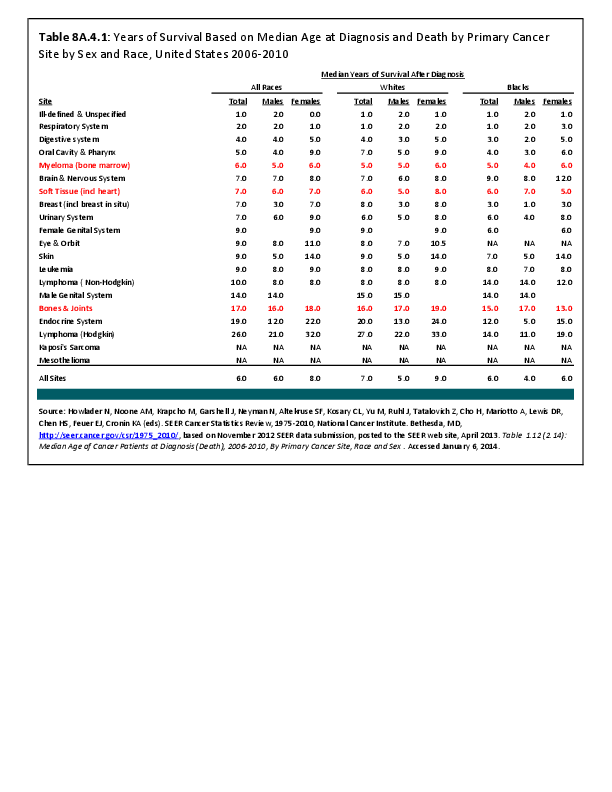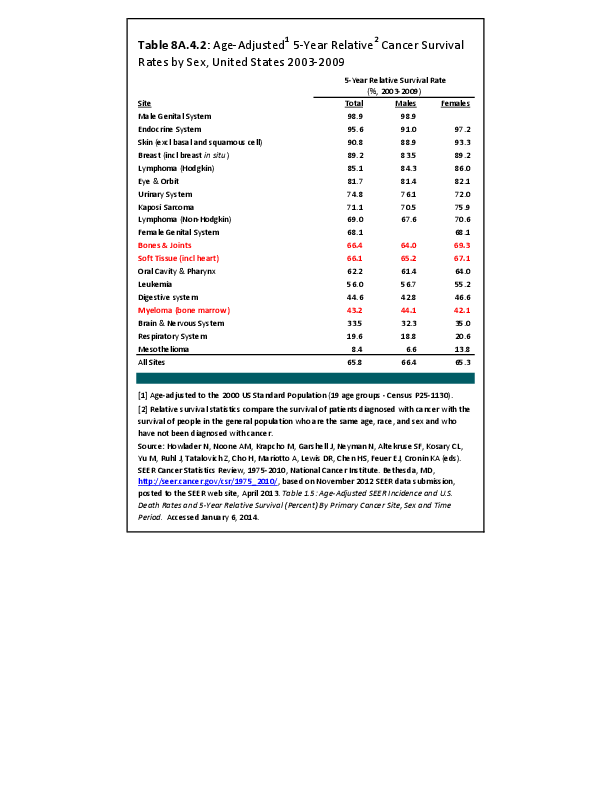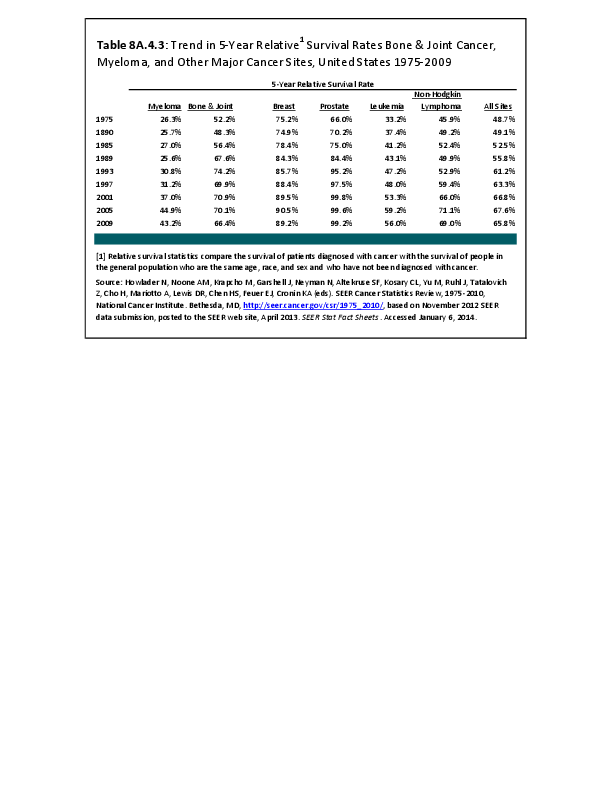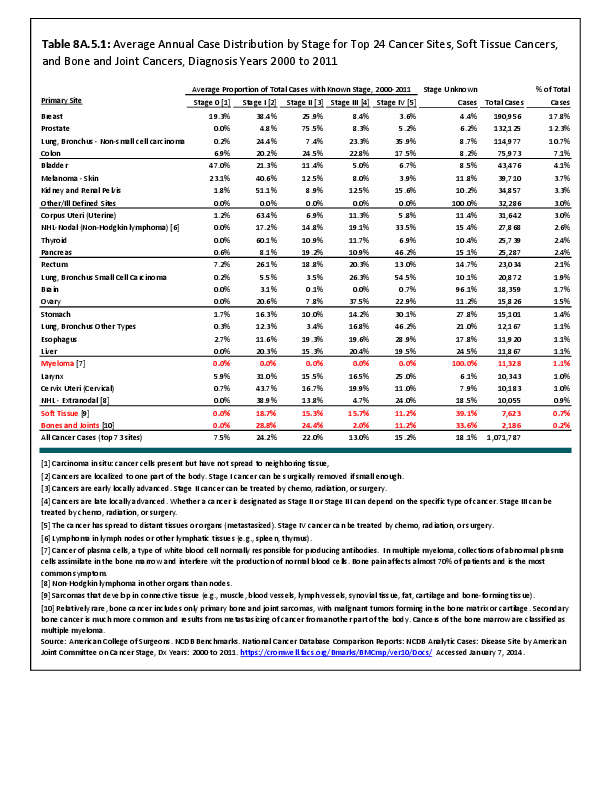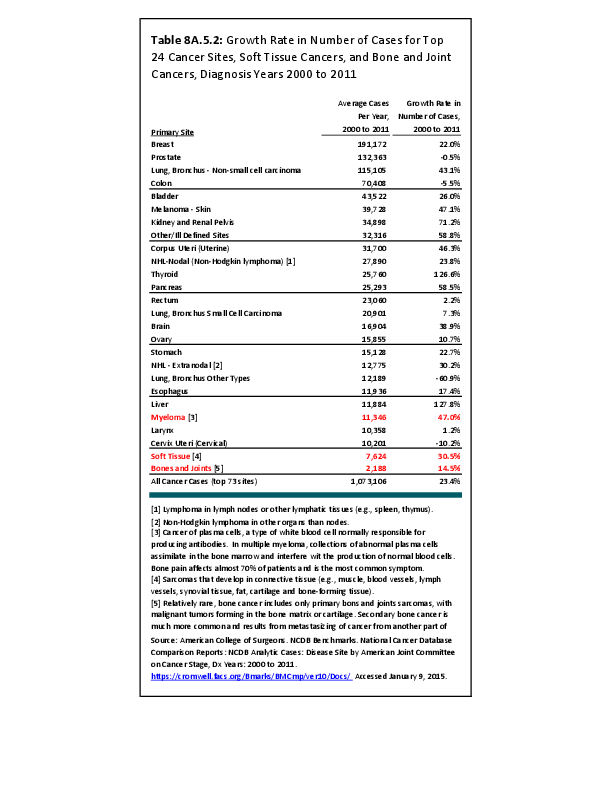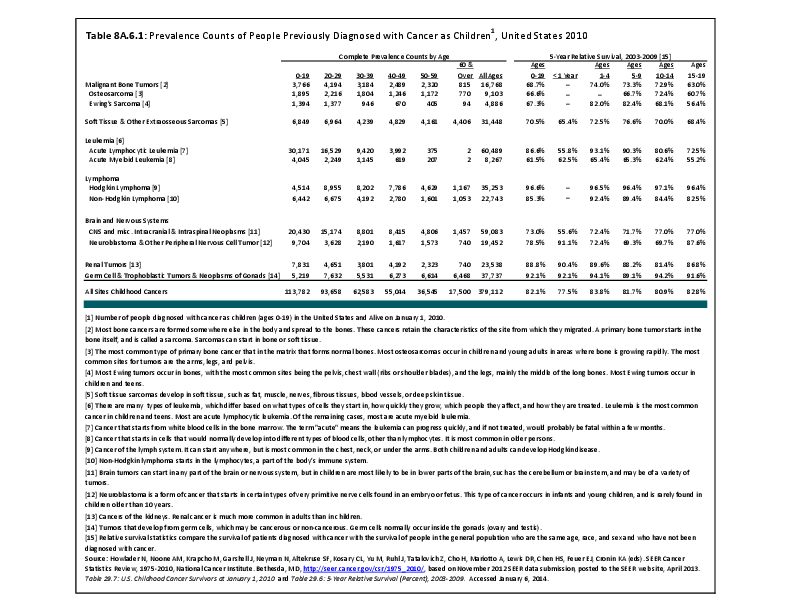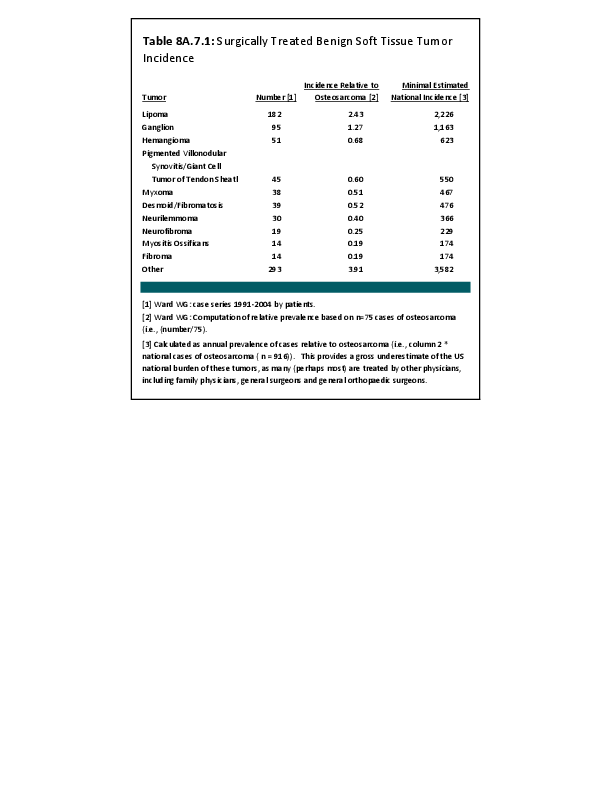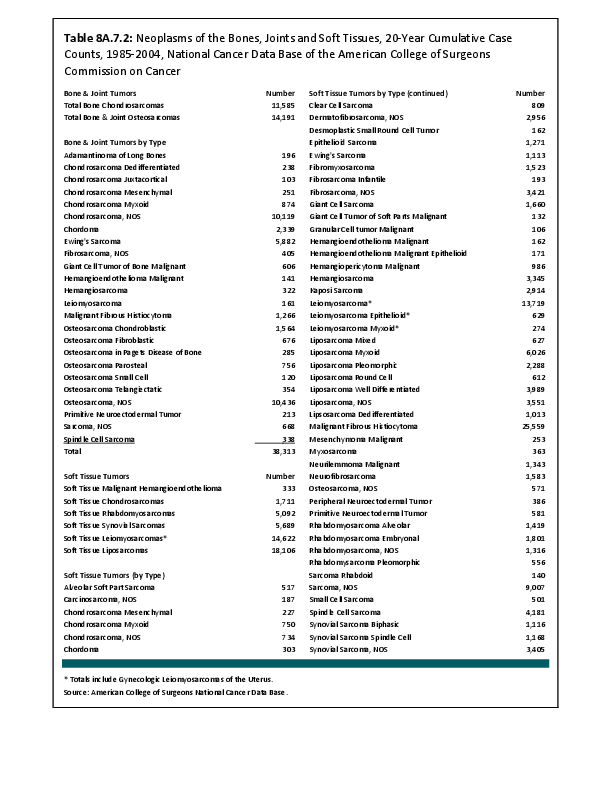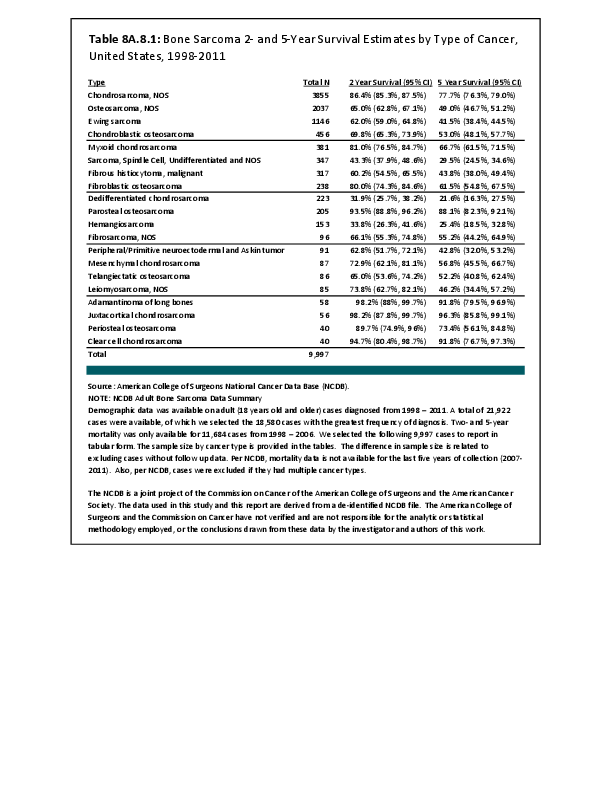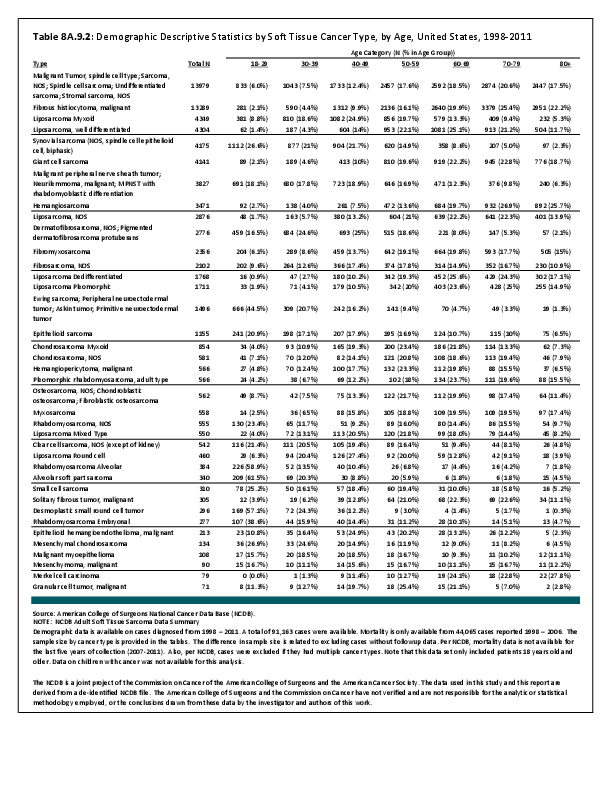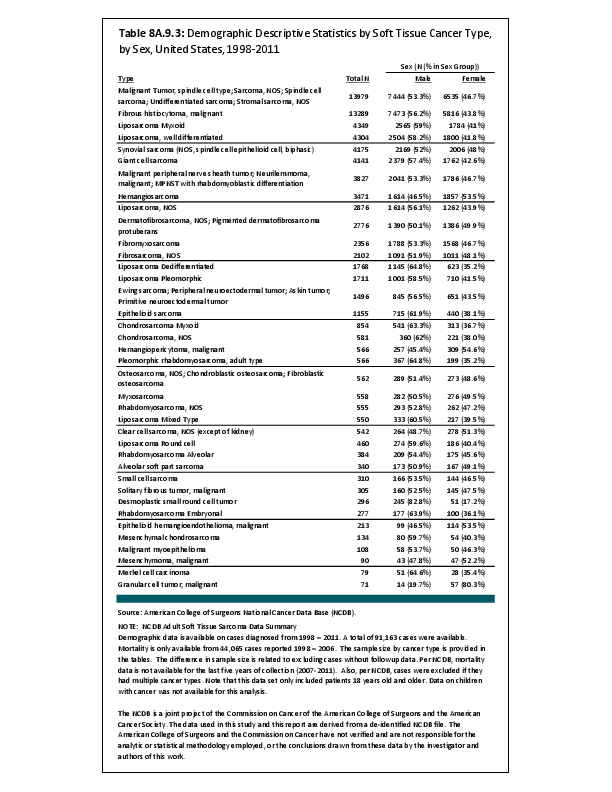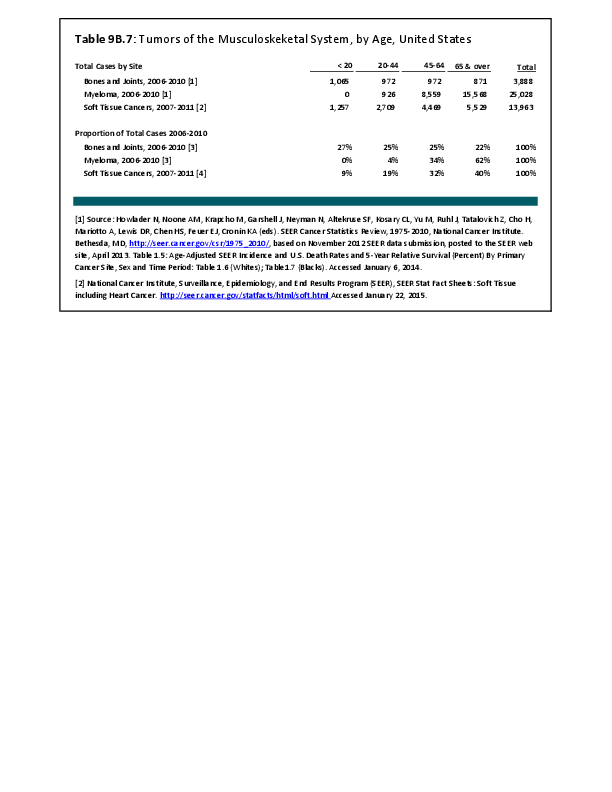Certain primary cancers of bones and joints (osteosarcoma and Ewing sarcoma) are found among those under the age of 30 years in higher proportion than expected for the overall incidence of most sarcomas. In 2006–2010, 43% of bone and joint cancers diagnosed were found in people under the age of 35 years, with more than 27% occurring among children and adolescents under the age of 20. This compares to less than 4% of all cancer sites in people aged 35 years and younger, and only 1% in those younger than 20 years. Hodgkin lymphoma is the only other cancer to affect young people in similar numbers, with a higher percentage of cases diagnosed in the 20-year to 34-year age range. The average age at diagnosis for bone and joint cancers is 42 years, surpassed in youthfulness only by Hodgkin lymphoma, diagnosed at an average age of 38 years. (Reference Table 8A.2.1 PDF CSV and Table 8A.3.2 PDF CSV)
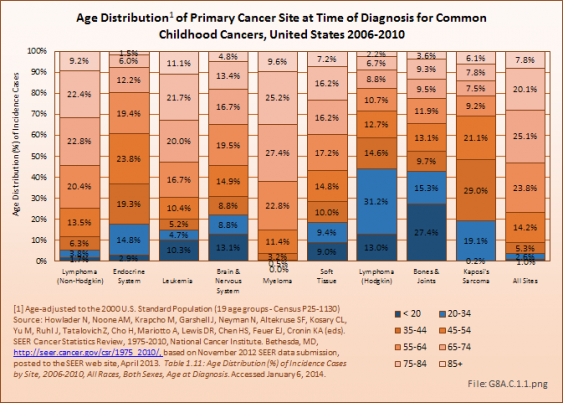
Deaths from bone and joint cancer also are more common in people under the age of 35 years. Between 2006 and 2010, 13% of deaths from bone and joint cancer occurred in children and youth under the age of 20, and an additional 15% among young adults aged 20 years to 34 years. The mortality rate among younger persons from bone and joint cancer comprises only 0.2% of deaths from all types of cancer, but is 8% of cancer deaths in people under the age of 20 years and 5% of deaths among young people aged 20 to 34 years. The relative proportion of deaths from bones and joints cancer was higher in children, youth, and young adults than all other cancer types that disproportionately affect younger people, including brain and nervous system, leukemia, endocrine system, and soft tissue cancers. The average age at death for bone and joint cancer is 59 years, the youngest of all types of cancer. (Reference Table 8A.2.2 PDF CSV and Table 8A.3.4 PDF CSV)
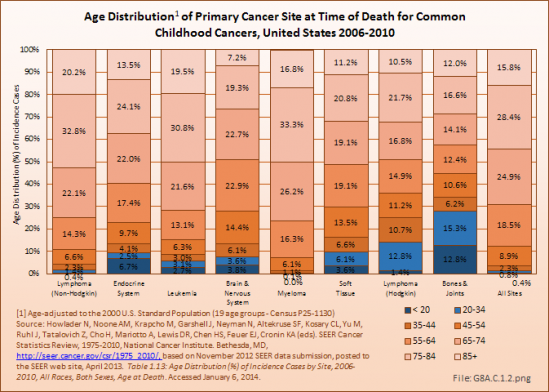
In 2010, osteosarcoma accounted for 54% of the malignant bone tumors in survivors diagnosed with cancer as children and alive on January 1, 2010. The majority of the remaining bone tumors in survivors diagnosed as children and still alive had been diagnosed with Ewing sarcoma (29%). Among the childhood cancer survivors of all ages, 4% were survivors of bone tumors, a proportion that increased slightly with age. Males were a greater proportion of the osteosarcoma survivors than were females until survivors reached middle age, when females were a larger share. Nearly one in four (22%) of the survivors had been diagnosed some 35 years ago. This is comparable with childhood cancer survivors for all types of cancer, where 20% were diagnosed more than 35 years before death. (Reference Table 8A.6.1 PDF CSV and Table 8A.6.2 PDF CSV)
Although not considered a childhood cancer, soft tissue sarcomas, which affect all ages, accounted for 9% of new diagnoses in the years 2006 to 2010 in children and young adults under the age of 20. Another 9% were found in the population age 20 to 34. Deaths from soft tissue sarcomas in this time frame were slightly lower, but still accounted for a higher proportion of cancer deaths in the under 35 population (4% and 6%, respectively) than all except bone and joint cancers. (Reference Table 8A.3.2 PDF CSV and Table 8A.3.4 PDF CSV)
Rhabdomyosarcoma, a soft tissue sarcoma, accounts for 3% of all new childhood cancers each year. The 5-year survival rate when detected in children under the age of 14 is 64%.1
- 1. Cancer.net: Rhabdomyosarcoma-Childhood: Statistics. Available at: http://www.cancer.net/cancer-types/rhabdomyosarcoma-childhood/statistics. Accessed February 11, 2015.
Edition:
- 2014

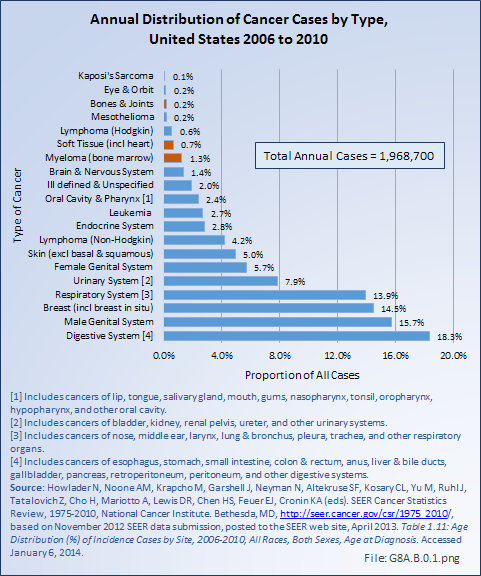
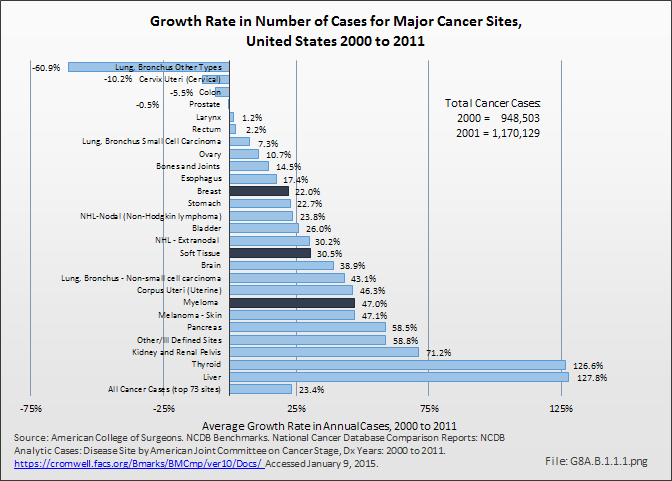
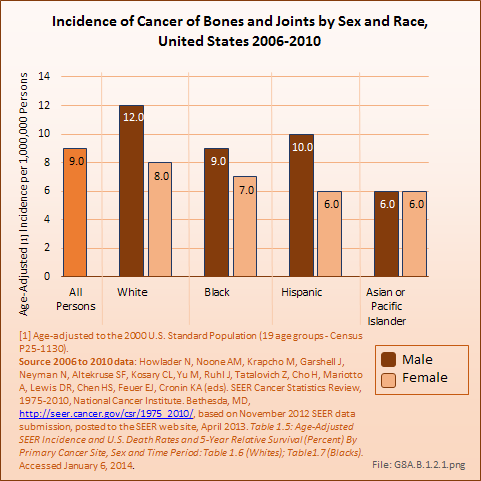
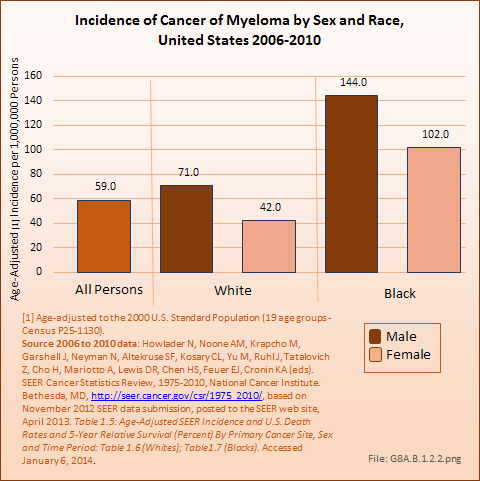
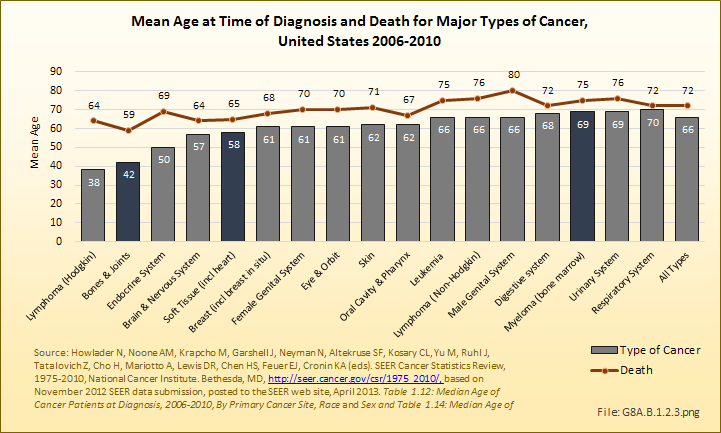
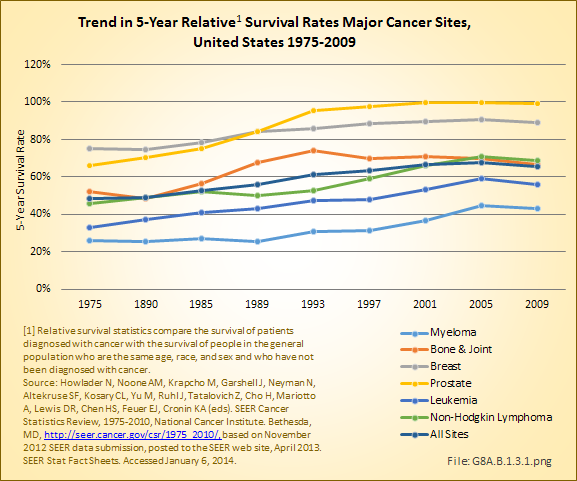
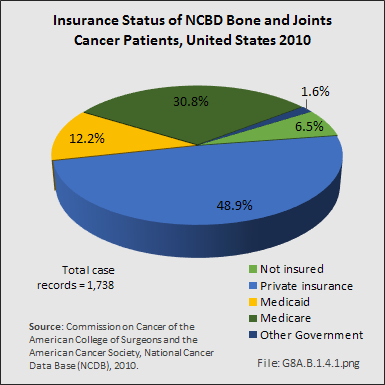
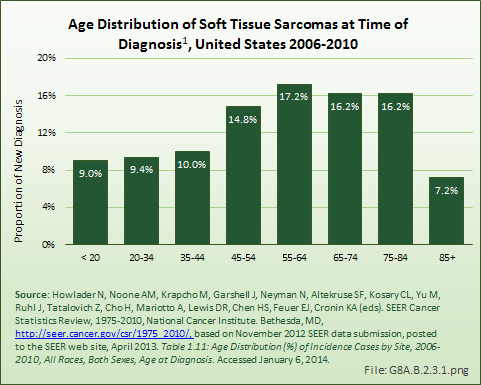
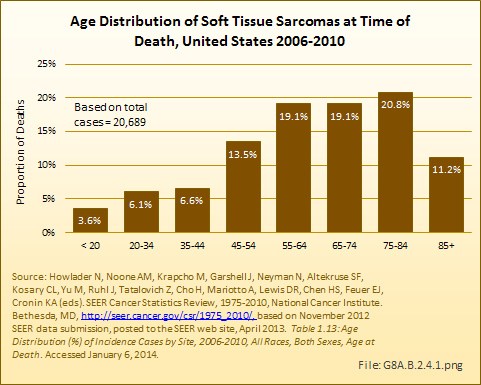
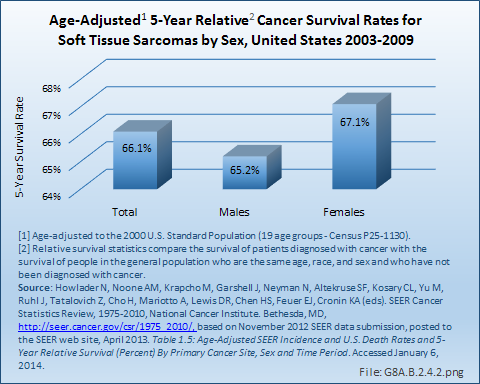
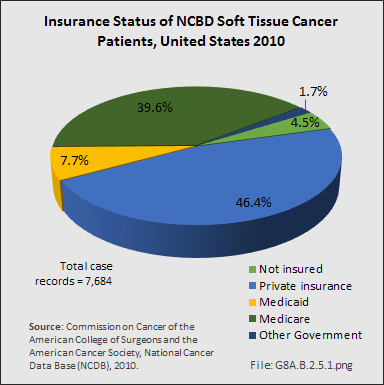
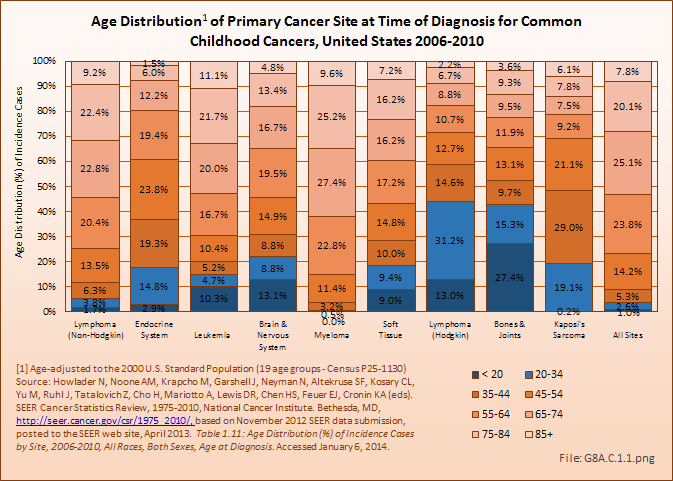
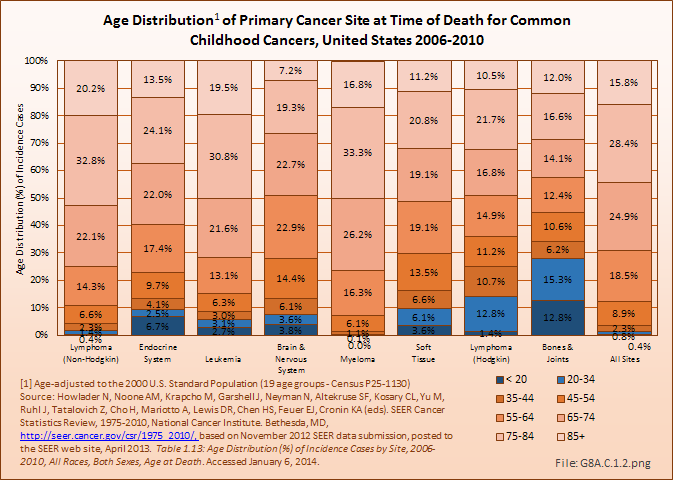
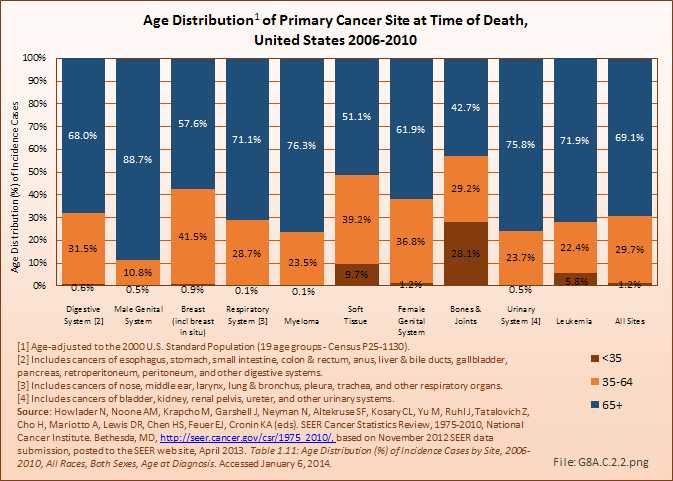
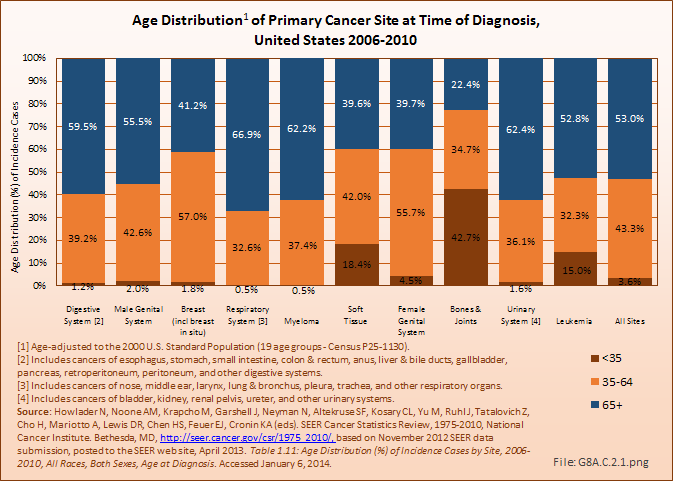
 Download as CSV
Download as CSV